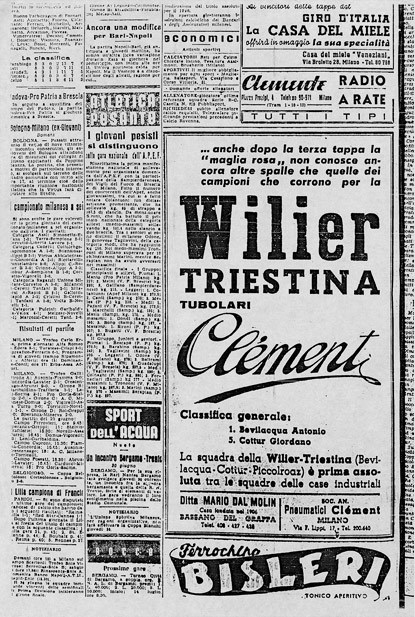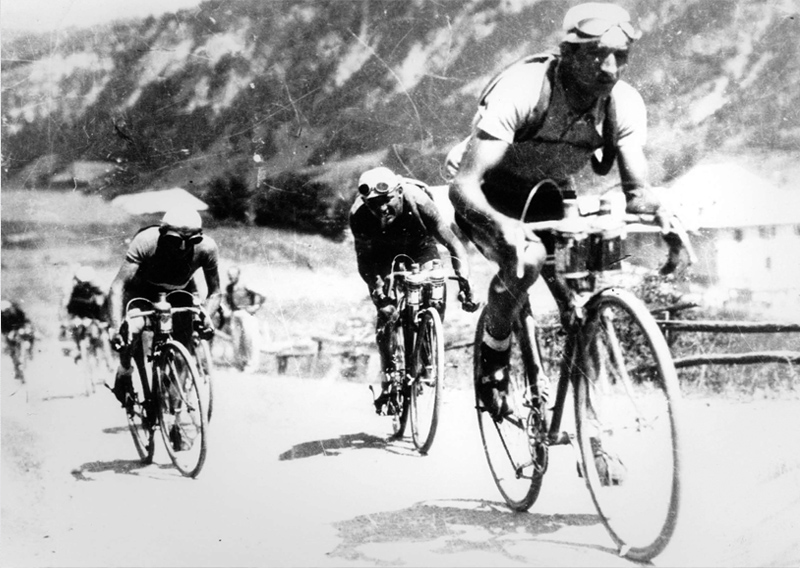A “romantic” team
Under the symbol of San Giusto’s halberd
It was the eve of the Giro d’Italia of 1946, the revival edition. The gazette dedicated the newly formed Wilier Triestina professional team an article that exudes Italianism and patriotism, putting Trieste, the contended city, and the cycling team that would symbolise it on a pedestal. This explains why only cyclists from the Veneto and Friulia regions would be enrolled and why the bicycle they would use would be renamed “La Triestina”, a name that the dedicated journalist proposed to also adopt for the team, which however was never to take on that complete name.

Once “La Triestina” had been created, as a very valuable model from the “Wilier” factory in Bassano del Grappa, and Cottur had been chosen to head the team, one could focus on all the rest that needed to be done. Dal Molin picked a successful entourage. Zandonà, an excellent local former racer was to become the sporting director; the most famous cyclists among those available, Bevilacqua and Brotto, would work as representatives, and the most promising young cyclists in Veneto would be chosen for Giro d’Italia, among the many riding in Veneto and Bassano in particular, to be supported incessantly by Dal Molin, Zandonà and Reato. That’s the team Dal Molin sent to the Giro d’Italia, naming it after the well known crest and the new Wilier-Triestina bicycle, called “La Triestina” for greater simplicity. Cottur, the solid, composed and clever racer from Trieste, was the leader. He had already won a stage of the “Giro” (1939) that ended in his city. Cottur is specialised in stage races (he had arrived seventh in 1939 and third in 1940). He is now in great shape and fully charged to take part in the Giro d’Italia in tip-top condition. Bevilacqua also joins the Wilier Triestina team, as a former champion of chasing that has gradually regained shape and is very close to his best performance. Brotto is the third team member. A determined, bold and shrewd racer that will be valuable for the team. But Dal Molin entertained the idea of launching some novices and thus completed the team, affectionately and cleverly managed by Zandonà, with former amateurs tested in the Giro dell’Emilia stage race: Egidio Feruglio, the winner of the Modena race, Bortolo Bof, ranking third, and the bull Annibale Brasola, the bugbear of the Veneto races that has achieved one success after another and has shown, in the second year of his career, unique physical skills and the potential of progressing considerably. We’ll find out who the seventh one is by the end of today. An interesting team that will assert itself at the Giro d’Italia.
[ 5 June 1946 – Il Gazzettino ]


